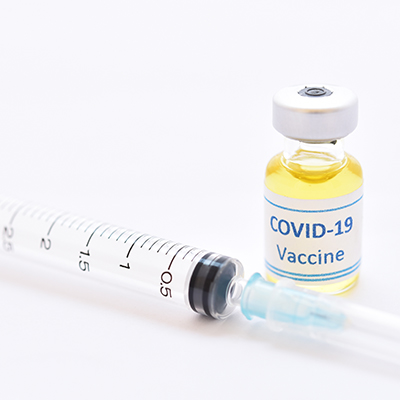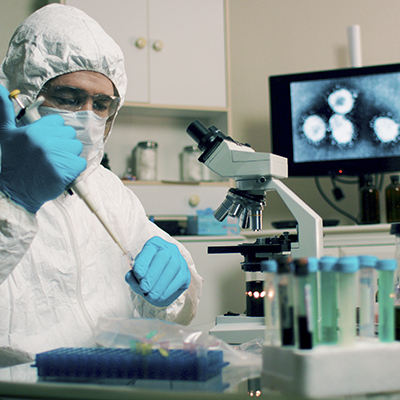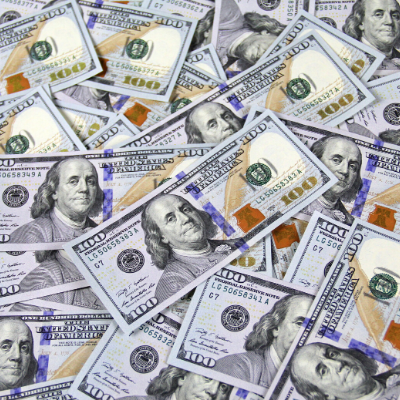April 29, 2020 -- As of April 2020, the COVID-19 pandemic has infected millions and killed more than 200,000 people, requiring lockdowns and social distancing measures that, in turn, greatly hurt the profitability of many industries. The pharmaceutical industry is no exception to the economic downturn, despite its activities being more important than ever.
As the production of raw materials and active pharmaceutical ingredients (APIs) has stalled, the pharmaceutical industry is experiencing a global supply chain disruption. The production of APIs in China slipped by 10% to 20% during the early days of the COVID-19 outbreak in Wuhan. Even though API output is now recovering as China lifts its lockdown, bottlenecks in API distribution are still occurring due to slowdowns in ocean freight shipments.
Similarly, India, another leading API manufacturer, halted the export of 26 ingredients commonly used in pharmaceuticals. India is a leading exporter of generic drugs, and it depends on China for more than two-thirds of its bulk drug needs.
India in turn supplies almost half of the generic drug needs in the U.S. With India's exports halted, the U.S. is experiencing a supply shortage, further hampering pharmaceutical companies during the pandemic.
Stay-at-home orders also lower research productivity due to operational cuts; many drug discovery processes are also hindered by the response to the global outbreak.
Fortunately, the pharma industry has also received stimulus during this time. A bill to encourage the manufacture of APIs in the U.S. was introduced in the U.S. Senate. The Securing America's Medicine Cabinet Act (SAM-C) expands the U.S. Food and Drug Administration's (FDA) Emerging Technology Program and authorizes $100 million to build centers of excellence for advanced pharmaceutical manufacturing to help therapeutic development and manufacturing in the U.S.
Similarly, the Indian government has set aside Rs 10,000 Crore ($1.3 billion U.S.) for the pharmaceutical industry to shift the country away from its reliance on APIs produced in China.
Leading the race for a cure
Furthermore, the pandemic has triggered a global race to find a treatment for COVID-19, and pharmaceutical companies are working hard on researching potential COVID-19 vaccines, treatments, and diagnostics. The U.S. Food and Drug Administration has executed the Coronavirus Treatment Acceleration Program (CTAP), a public-private approach to bring coronavirus treatments to the market as fast as possible. The CTAP program will use every means the agency has to bring new therapies to sick patients.
Meanwhile, the European Commission has been funding projects to develop vaccines, treatments, and diagnostics via grants from Horizon 2020 and the Innovative Medicines Initiative (IMI), which announced up to 45 million euros ($48.8 million) in public funding. The IMI expects pharma companies to pitch in more money to make a total investment of 90 million euros ($97.7 million).
With these massive investments, the pharma industry is boosting its research to find the holy grail for COVID-19. Currently, there are over 155 medicines and 70 vaccines for the novel coronavirus in the development pipeline. Remdesivir by Gilead is one of the leading medications in development, with animal testing and clinical trial data showing promising results toward treating COVID-19.
Meanwhile, Moderna, the U.S. National Institute of Allergy and Infectious Diseases, Inovio Pharmaceuticals, and CanSino Biological are at the forefront of vaccine development, as each company is entering clinical trials with different vaccine platforms. Genetic vaccine platforms using DNA/RNA manipulation seems to be leading this race. This type of vaccine can potentially be developed and produced more quickly than traditional vaccines.
All of these amazing discoveries in such a short amount of time are only made possible with advanced technologies behind them. Techniques such as polymerase chain reaction (PCR), sequencing, and enzyme-linked immunosorbent assay (ELISA) are heavily employed in multiple facets of this research. Furthermore, organizations involved in drug development rely on multidisciplinary talent and a diverse array of instrumentation to efficiently elucidate disease targets, screen compounds and biological molecules, and determine the pharmacological properties and safety of these candidates before proceeding to clinical testing.
Analytical instrumentation is at the heart of every drug discovery and development process. The inherent need for precise and accurate analysis of pharmaceutical and biotherapeutic compounds, combined with strict regulatory environments, ensures that laboratory testing of these materials sits at the forefront of analytical science and innovation.
Learn more about the status of the pharmaceutical industry in Strategic Directions International's, a Science Advisory Board partner, 2020 Pharmaceutical Market Opportunity Report. The goal of this report is to provide a strategic perspective on the current situation and projected market potential for instruments used in pharma and biotech, especially amid the coronavirus chaos.
Disclosure notice: Strategic Directions International is a sister company of The Science Advisory Board.
Copyright © 2020 scienceboard.net









